51+ Sample Certificate of Conformance
-
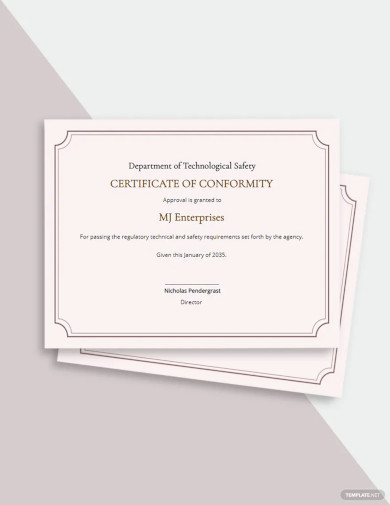
Vintage Certificate of Conformance Template
download now -

Certificate of Conformance Template
download now -
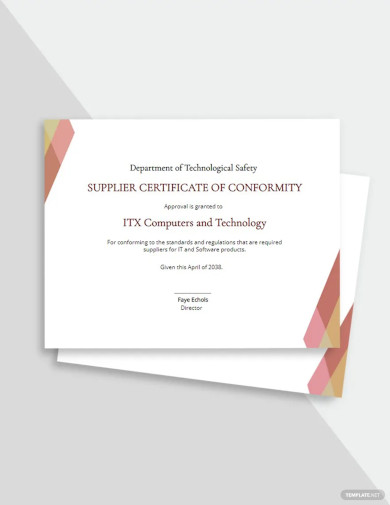
Supplier Certificate of Conformance Template
download now -
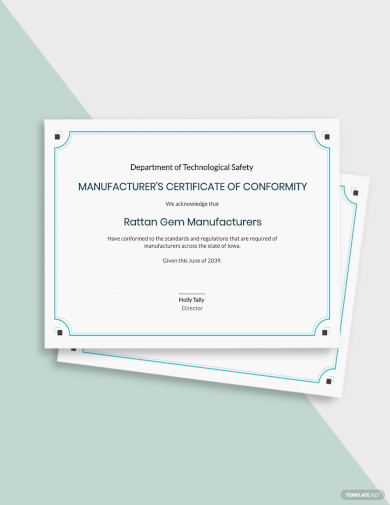
Manufacturer’s Certificate of Conformance Template
download now -
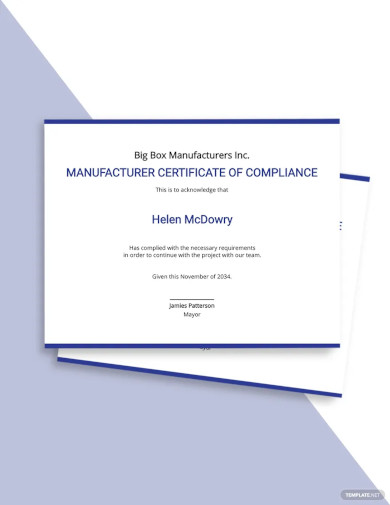
Free Printable Conformance Certificate Template
download now -
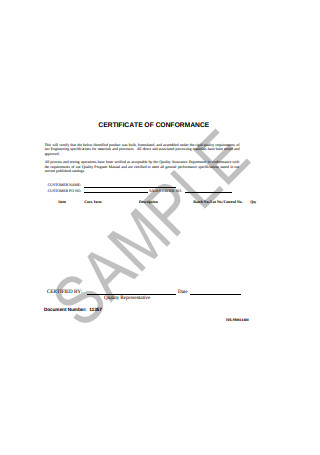
Certificate of Conformance Form
download now -
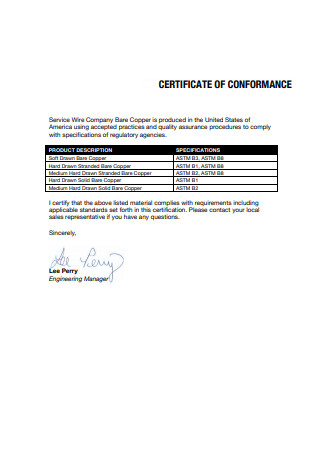
Manufacturing Certificate of Conformance
download now -
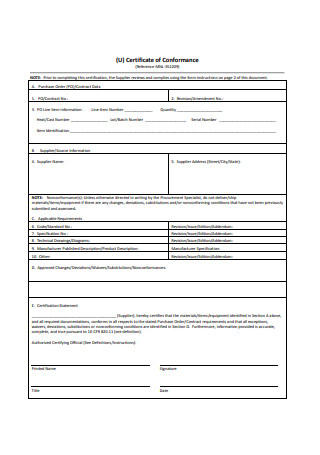
Conformity Certificate of Conformance Format
download now -
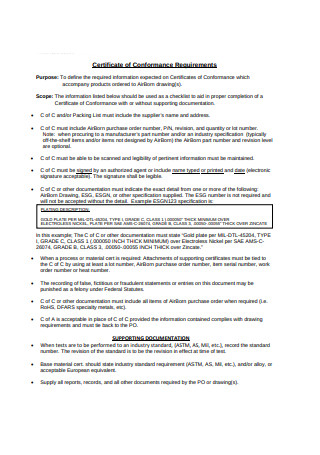
Certificate of Conformance Quality Requirements
download now -
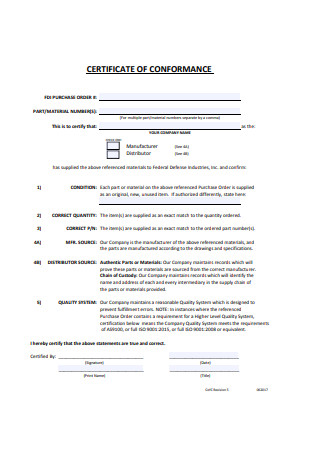
Certificate of Electronics Conformance Sample
download now -
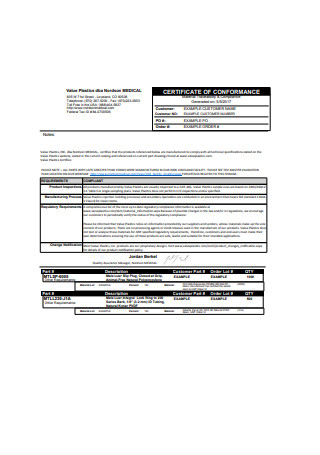
Product Certificate of Conformance
download now -
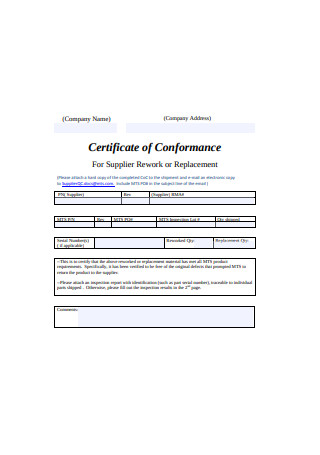
Sample Raw Material Certificate of Conformance
download now -
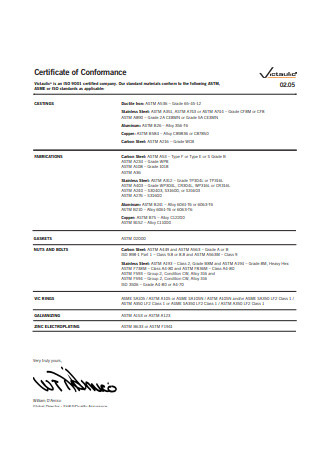
Certificate of Food Material Conformance
download now -
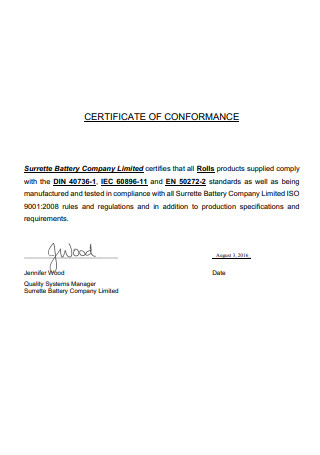
Pharmaceutical Certificate of Conformance Sample
download now -
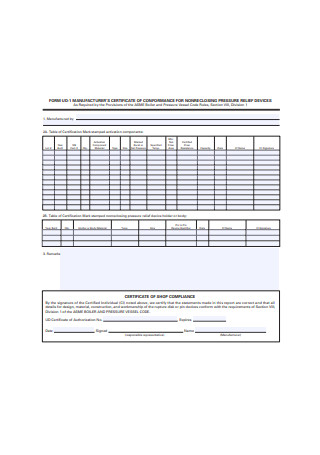
Manufacturer’s Blank Certificate of Conformance
download now -

Certificate of Medical Device Conformance Letter
download now -
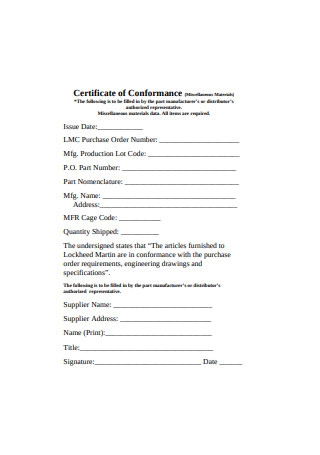
Aviation Certificate of Conformance Sample
download now -
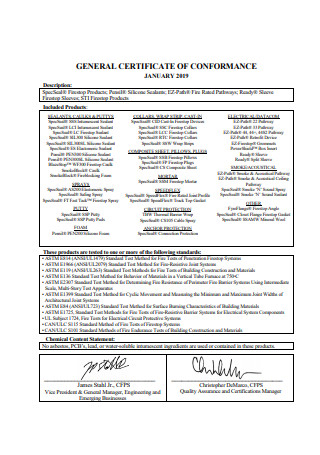
General Packaging Certificate of Conformance
download now -
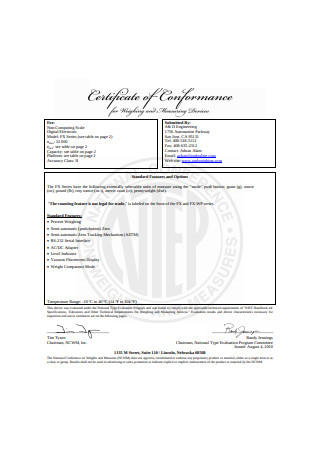
Basic Welding Certificate of Conformance
download now -
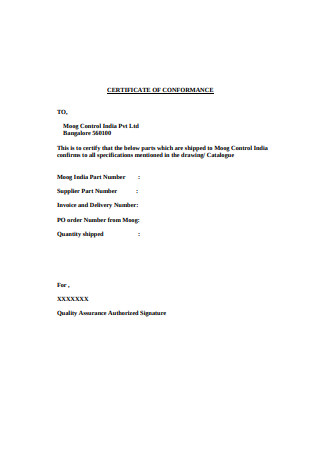
Standard Compliance Certificate of Conformance
download now -
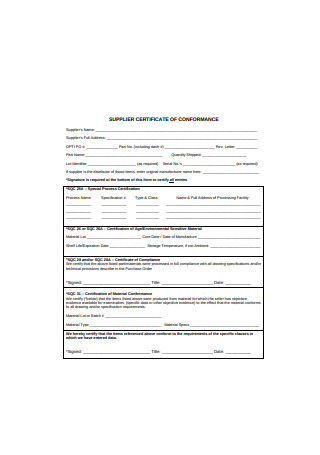
Supplier Test Certificate of Conformance
download now -
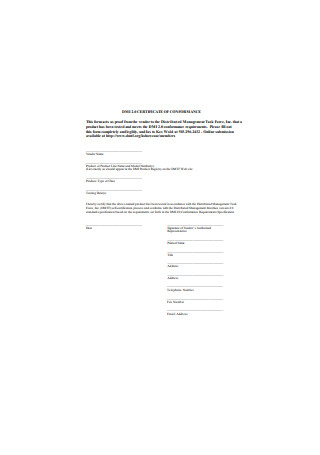
Sample Steel Certificate of Conformance
download now -

Chemical Certificate of Conformance Example
download now -
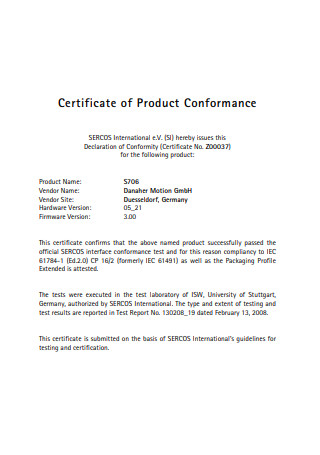
Certificate of Product Conformance
download now -
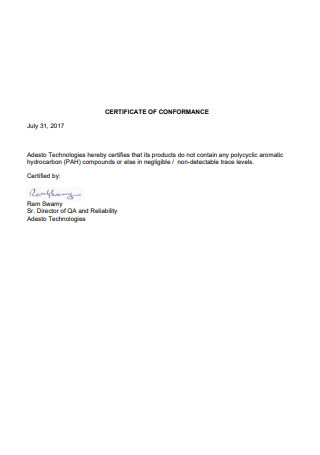
Sample Certification of Conformance Letter
download now -
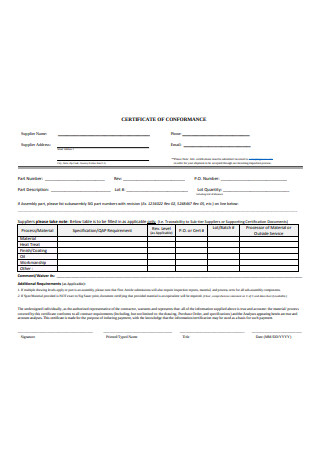
Supplier Certificate of Conformance Format
download now -
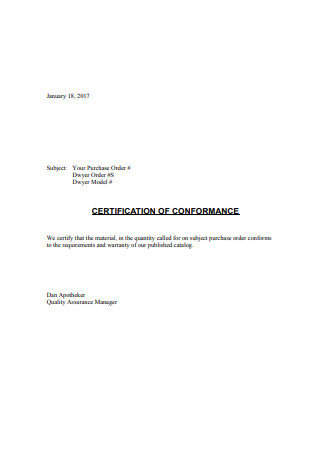
Certificate of Material Conformance Sample
download now -
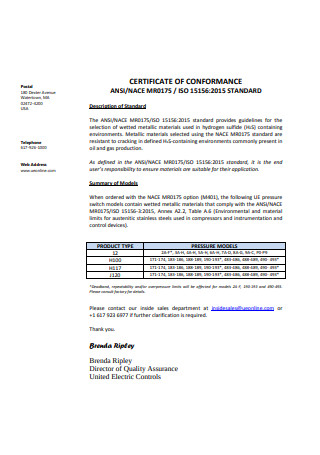
Standard Certificate of Conformance Example
download now -
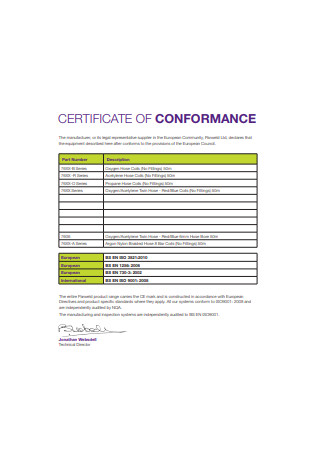
Supplier Certificate of Conformance Sample
download now -
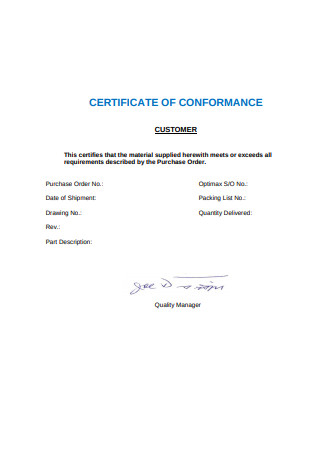
Certificate of Material Conformance Example
download now -
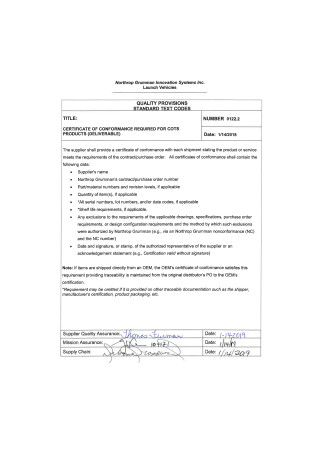
Product Certificate of Conformance Example
download now -
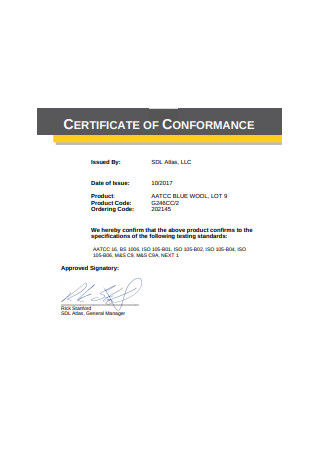
Basic Certificate of Conformance Format
download now -
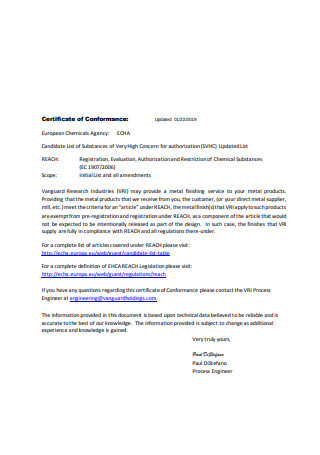
Standard Certificate of Conformance Format
download now -
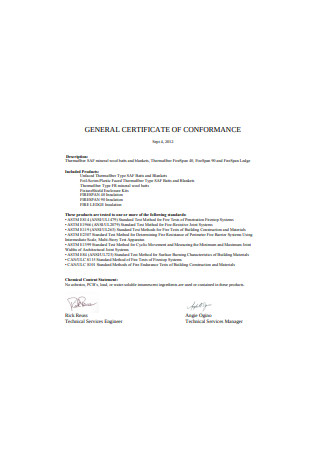
General Certificate of Conformance Format
download now -
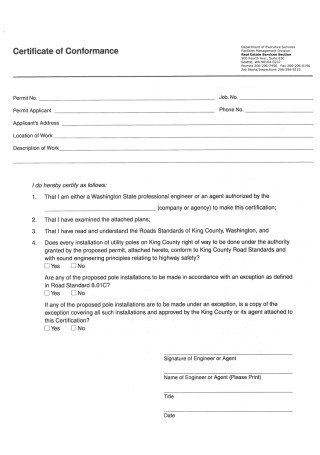
Printable Certificate of Conformance
download now -
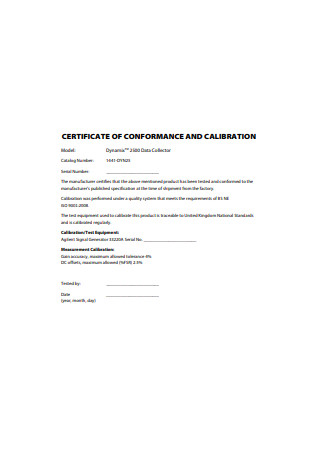
Certificate of Conformance and Calibration
download now -

Basic Certificate of Conformance Example
download now -
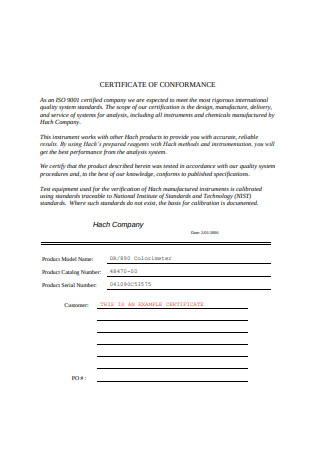
Standard Certificate of Conformance Sample
download now -

Sample Certificate of Conformance Requirements
download now -
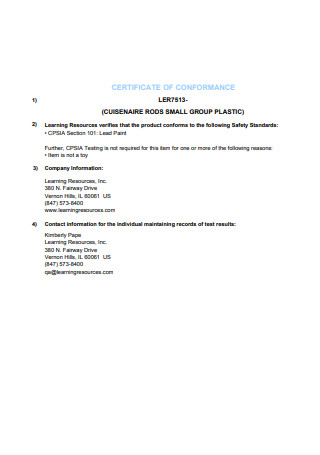
Product Certificate of Conformance Format
download now -
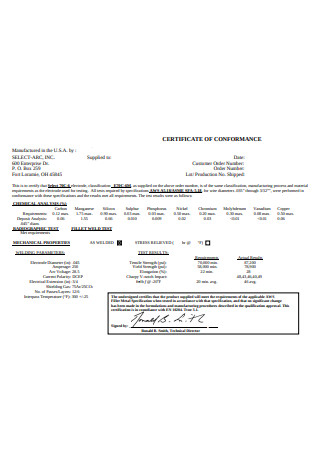
Certificate of Material Conformance Format
download now -
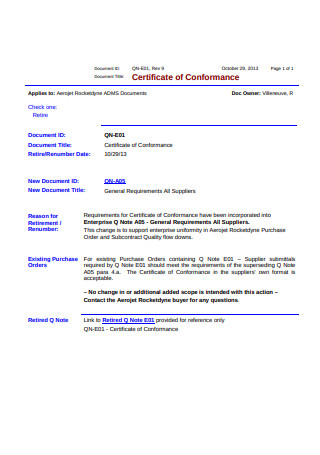
Basic Certificate of Conformance Requirements
download now -
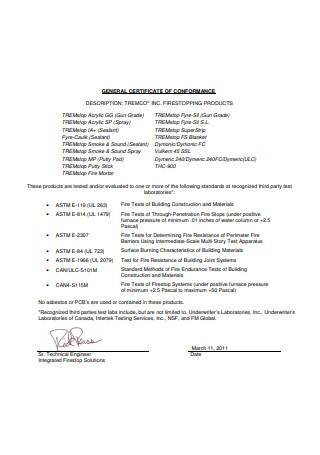
General Certificate of Conformance Example
download now -
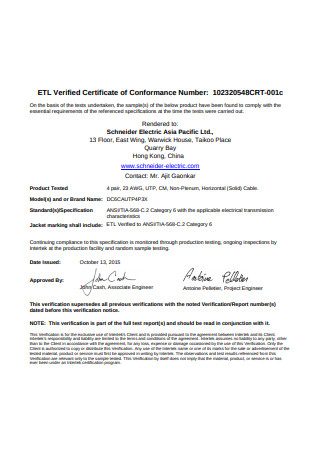
Printable Certificate of Conformance Format
download now -
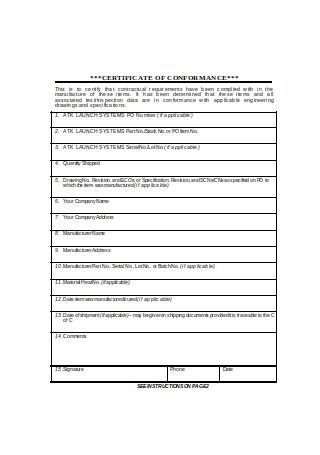
Sample Certificate of Conformance Form
download now -
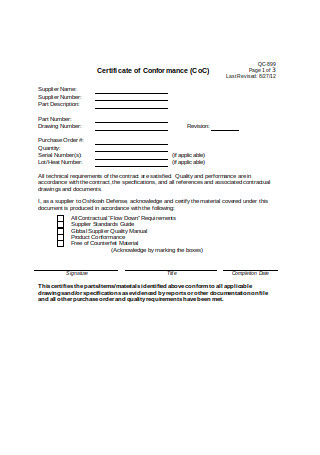
Basic Supplier Certificate of Conformance
download now -
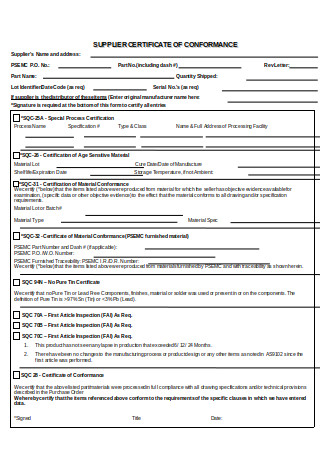
Basic Supplier Certificate of Conformance Example
download now -
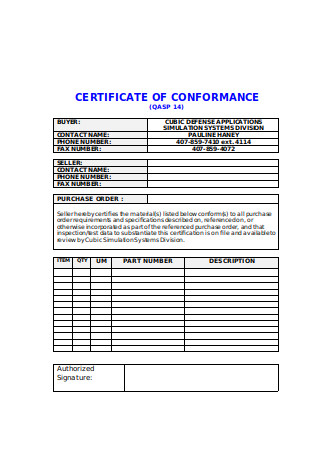
Basic Certificate of Material Conformance
download now -
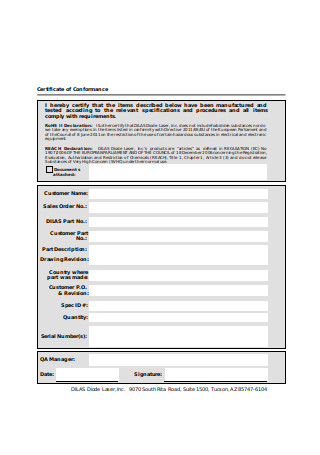
Standard Certificate of Conformance Requirements
download now -
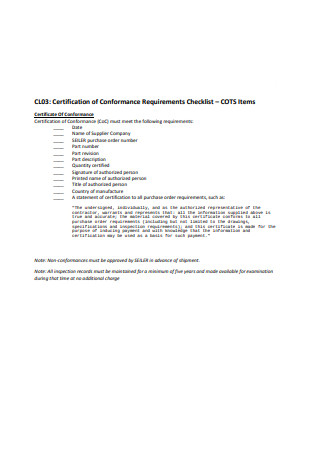
Certificate of Conformance Requirements Checklist
download now -
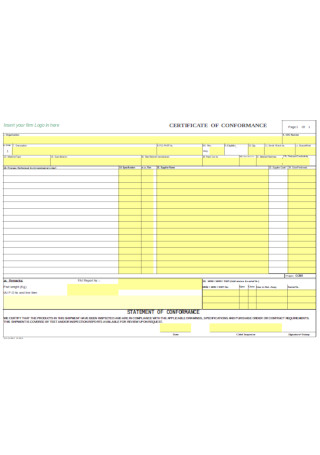
Simple Certificate of Conformance Example
download now
Defining a Certificate of Conformance
Trade continue to play a significant part in America’s growing economy. According to the Office of the U.S. Trade Representative, about 300,000 small and medium enterprises in the country sell products or services to the international market. Data gathered by Statista also recognizes the United States as the country with the highest import value in the world, with China taking the lead for export. Given the contributions of trade to the global economy, leaders in every country know how important it is to ensure the safe and legal distribution of goods to domestic and foreign markets. This is where the implementation of rules and the issuance of certifications come in.
Also known as a certificate of conformity or certificate of compliance, this certification clears a product to signify its adherence to a country’s consumer safety and quality standards so that vendors may sell or distribute the product legally. The involvement of third-party inspection agencies is also quite common, as it does help the federal government monitor imports and local products effectively.
Countries that require this certification include Algeria, Belarus, Kenya, Kuwait, Mongolia, Russia, Saudi Arabia, Syria, Uganda, and Yemen.
Who Can Issue a CoC?
Only authorized individuals and agencies can legally issue a CoC. It can be a registered practitioner or an accredited inspection agency, depending on who you hire for the job. For products manufactured overseas, issuance of this certificate must occur before shipment and care of the item’s importer. But for manufacturing companies of domestically sold products, while not always necessary, they are responsible for the certificate’s issuance. And even if you do hire a third-party agency to assist you in drafting the document, you’ll still be liable for any legal concerns that come about. Thus, it should be one of your top priorities as a manufacturer or importer of goods.
If you operate in the electrical industry and opt to have a person (as opposed to an agency) issue the CoC, ensure that the individual has the right license to do so. There are three categories of registered people recognized by the CPSC: an electrical tester, an installation electrician, and a master installation electrician. The person must possess sufficient knowledge, skills, and abilities to verify, test, and inspect the condition of a product or service. Similar qualifications apply to testers in other industries.
Manufacturers or importers must then supply distributors or retailers with the CoC for shipment and delivery. Providing a copy of the certificate upon the Custom Commissioner’s request is a must, so be sure to prepare a soft and hard copy of the document in advance. For quick access, you can also choose to make an electronic copy of the CoC available to recipients by enclosing a link in your invoice. Securing extra copies of the CoC in different formats is sure to come in handy.
When Is a Certificate of Conformance Necessary?
Generally, all manufactured or imported items must comply with a country’s consumer safety laws before the public may send in a purchase order. And because the minimum technical and safety requirements may vary in every country, it is the responsibility of the manufacturer or importer to have these products checked beforehand with the authorized groups. In some cases, third-party entities participate in the product’s design or testing process for verification. And since there isn’t a need to file this paperwork with the government, all that there is left for you to do is to send the certificate along with the product shipment. It’s also important to note that CoCs are not a requirement for direct sales to consumers.
Listed below are some of the common instances that involve the mandatory use of CoCs.
Certificate of Conformance (CoC) vs. Certificate of Analysis (CoA)
Products sold to the consumer public must always undergo a series of tests to determine whether the item consents to a set standard. Two of the most common certifications issued by the authorized agencies to establish this include the Certificate of Conformance (CoC) and the Certificate of Analysis (CoA). For us to determine the difference between CoCs and CoAs, let’s start by defining them individually.
A certificate of conformance contains minimal information used to verify the compliance of goods to specified regulations. Suppliers or vendors of these goods must obtain a license to prove that the supplied products meet the quality requirements set by local or national policies for its legal consumption. However, evidence of this conformance may not always be elaborated through actual results. Instead, the certificate indicates the product’s fulfillment to the set requirements directly for immediate delivery.
On the other hand, a certificate of analysis centers on quality assurance. This type of certification is far more comprehensive as opposed to CoCs, which is why you’ll also find them to be more accurate in detail. Data in a CoA also remains complex yet explicit enough for it to be more feasible in communicating measurements and test arrangements. What makes it distinctive from a CoC is that it records the results acquired during testing, along with the exact measurements of the product or accessory in question. This includes the conditions, specifications, and outcomes reported upon examination. Because of this, CoAs tend to cost more time and money to issue compared to CoCs.
How Do You Create a Certificate of Conformance?
Whether you hire a testing facility or maintain your own testing equipment, you must have some knowledge of what goes in a certificate of conformance. That way, you’ll know if your products and services meet the specifications set by the authorities. You can browse through the different certificate of conformance templates and examples provided above, or refer to the key components included in a CoC below.
1. Acquire Product ID & Importer or Manufacturer ID
Proper identification is not something you overlook in business; otherwise, it may take forever for you to trace a product back to its supplier. The CoC must provide a brief description of the product identified. It should also cover information about the importer or domestic manufacturer behind the item, including the name, mailing address, and contact number of the company certifying the product. This part of the certificate is imperative for tracking items in case a legal issue arises.
2. Employ Safety Standards
Include a list of requirements needed to clear the product for distribution. Since safety regulations differ in every region, be sure to indicate the specifics clearly for testing and approval. This should serve as a guide to verify whether the product passes all the qualifications so that a supplier can forward it for shipping. Products that fail to meet federal expectations must be returned to the manufacturer for corrective measures.
3. Contact Details to Obtain Copy of Test Results
The authorities, or even the distributors of the items you are selling, may have a few questions about the product which you can easily address with supporting documentation. You’ll likely have an individual or an agency maintaining these records that you can call for assistance. Keep in mind that falsified documents are a violation of the Consumer Product Safety Act, and trouble with the law is the last thing your business ever wants to face. So for quick access and validation, remember to provide the person’s contact information in your certificate of conformity.
4. Get the Date & Place Manufactured & Tested
Based on the safety standards cited in the CoC, you’ll want to specify when and where the product was manufactured and tested for compliance. Ensure that the month and year of production are shown, as well as the exact address of such. This information should make identification much easier to do for future reference.
5. Details of Third-Party Laboratory for Testing
For instances involving third-party testing, make sure to name the laboratory that conducted the test. Only those accredited by the CPSC can do so legally. Anyone who reads the certificate should find the full name, mailing address, and contact number of the testing facility should there be any clarifications to make.
Avoid getting penalized or having your products confiscated by the authorities by prioritizing a certificate of conformance as one of your business documents to prepare. This approval system is mandatory in many countries to help define the safety and technical requirements of sellable goods. These rules exist for the benefit of consumers, which in turn protects your company from civil lawsuits.
